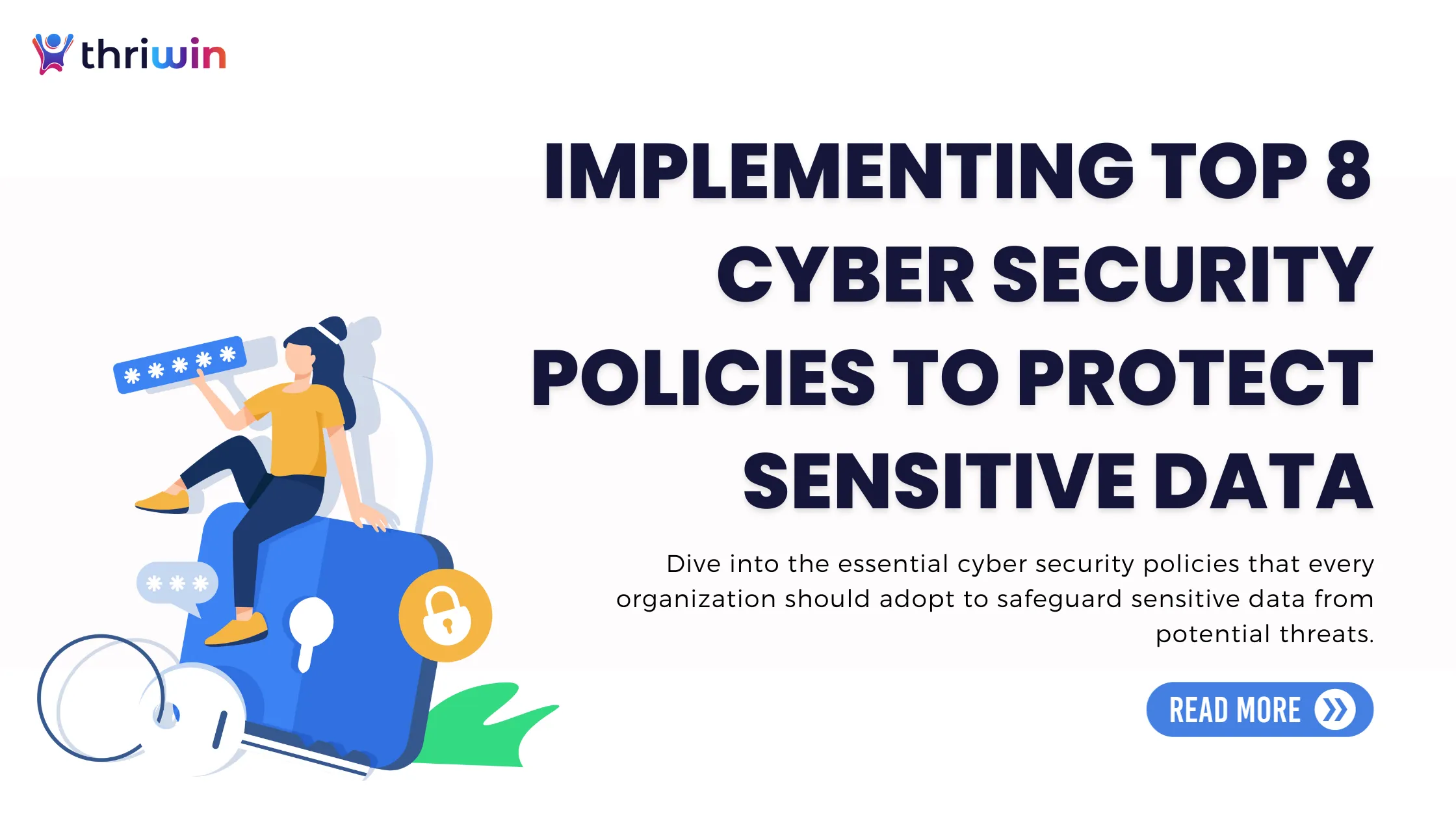Effective management of Governance, Risk, and Compliance (GRC) is crucial in steering corporate decisions. It involves strategically navigating through regulations, identifying and mitigating risks, and ensuring ethical governance. This approach helps businesses not only comply with laws but also make informed decisions, fostering a culture of accountability and resilience. By mastering GRC, companies can confidently face challenges and seize opportunities, ensuring long-term success in a dynamic business environment.
What is GRC & Why is it Important for Corporate Decision-Making
Governance, Risk Management, and Compliance are commonly referred to as GRC. It's crucial for corporate decision-making as it ensures companies responsibly manage risks, comply with laws, and govern themselves effectively, leading to sustainable and ethical business practices. It's like a company's internal GPS, ensuring they navigate risks, adhere to laws, and govern wisely.
Benefits of Implementing a GRC within your Company
GRC is not merely a compliance obligation; it's a strategic approach to unify governance, risk management, and compliance processes. This integrated framework helps businesses navigate regulatory complexities, manage risks effectively, and leverage data for informed decision-making. It's particularly vital in today's data-rich, digitally-driven business environment, where managing cybersecurity risks and maintaining regulatory compliance are paramount. By adopting GRC, companies gain a robust structure for making strategic decisions, ensuring responsible operations, and safeguarding their digital landscape.
Data-Driven Decision-Making
At the heart of GRC is the capability to make decisions based on comprehensive data analysis. This aspect of GRC equips companies with valuable insights and predictive models, enabling leaders to navigate complex business environments with informed, strategic choices. Utilizing data effectively through GRC tools means better risk assessment, opportunity identification, and strategic planning, all essential for staying ahead in competitive markets.
Responsible Operations
GRC is vital in maintaining operations that adhere to legal and ethical standards. By aligning with GRC principles, companies can efficiently manage regulatory compliance, avoiding legal issues and financial penalties. This alignment ensures operational integrity and strengthens trust among customers, investors, and regulators. A commitment to responsible operations underlines a company's dedication to ethical practices and sustainability.
Improved Cybersecurity
With the increasing reliance on digital technology, a robust cybersecurity strategy becomes crucial. GRC frameworks play a key role in developing and implementing comprehensive cybersecurity measures. These measures are essential for protecting sensitive data and digital infrastructure against cyber threats. By incorporating cybersecurity into governance and risk management, companies can safeguard their operations, ensuring continuity and securing customer trust.
What are the Key Components of GRC
The key components of GRC are like the pillars of a strong organization: Governance sets the direction, Risk Management navigates challenges, and Compliance ensures you play by the rules, all crucial for a thriving, responsible business.
Strategy
A well-defined strategy in GRC aligns a company's goals with risk management and compliance. For example, Apple's strategic focus on user privacy shapes its compliance policies and risk management, ensuring long-term business resilience and customer trust.
Processes
Efficient processes in GRC streamline compliance and risk management. Amazon, for instance, uses automated techniques for quick and effective compliance checks, enhancing operational efficiency and reducing human error.
Technology
Technology in GRC offers tools for better risk assessment and compliance management. Banks like Citigroup use AI and machine learning for real-time risk analysis, significantly improving their ability to detect and mitigate potential threats.
People
People are crucial in GRC, as their expertise drives the system. Google, known for its skilled workforce, emphasizes employee compliance and risk management training, ensuring that its team is well-equipped to handle complex GRC challenges.
Understanding the Governance Risk and Compliance Framework
The GRC framework integrates governance strategies, risk management practices, and compliance with laws, aligning them to bolster business integrity, operational efficiency, and legal adherence, which are crucial for sustainable corporate success.
Elements of a Robust GRC Framework
A robust GRC framework includes clear policies, risk assessment tools, compliance checks, and continuous monitoring. For example, IBM's GRC framework, as detailed in their corporate reports, emphasizes these elements, leading to effective risk management and regulatory compliance, thereby supporting their global operations.
Common Frameworks and Standards
Common GRC frameworks and standards include COSO for internal control, ISO 31000 for risk management, and GDPR for data protection. These frameworks, like ISO 31000, widely adopted by organizations like Microsoft, provide a structured approach to managing risks and ensuring compliance, as reported in Microsoft's security documentation.
Implementing and Testing the GRC Framework
Implementing and testing the GRC framework is a crucial procedure that requires integrating it into your company's everyday functions, educating your team on its significance, and consistently assessing its performance. This guarantees that the framework not only matches your business objectives but also stays adaptable and adaptable to changing risks, regulations, and market dynamics, ultimately securing your organization's future.
Benefits of the GRC Framework
A contemporary GRC management tool gives businesses a flexible, easy-to-use solution that fits seamlessly into their current tech setup. These tools take the stress out of handling regulatory demands, offering practical insights to enhance your GRC strategy and effectively align it with crucial risk areas like cybersecurity processes.
Enhanced Productivity
Implementing a GRC framework streamlines processes, reducing time and resources spent on compliance and risk management. For instance, a company like Tesla could use GRC to integrate its various compliance requirements, making its operations more efficient and focused on innovation.
Increased Transparency and Visibility
A GRC framework provides a clear view of governance, risks, and compliance status, aiding in better decision-making. A company like Google might use GRC tools to track and report on their data privacy practices, enhancing stakeholder trust and regulatory compliance.
Improved Third-Party Business Relationships
GRC frameworks help manage third-party risks and ensure compliance, strengthening business partnerships. For example, Amazon could use GRC to assess and monitor its vast network of suppliers and vendors, ensuring they meet Amazon's standards for security and ethical practices.
Challenges in GRC Implementation
Implementing a Governance, Risk, and Compliance (GRC) framework brings specific challenges, such as the integration of disparate systems, aligning the varied goals of different departments, ensuring adherence to policies by staff, and managing implementation costs effectively. These challenges require a strategic approach and thoughtful resource allocation. Overcoming these hurdles is crucial for establishing a GRC framework that not only meets regulatory standards but also aligns with your organization's unique operational context.
Overcoming Data Management Issues
Effective data management is crucial in GRC. Tools like IBM's OpenPages streamline data integration and analysis, helping organizations efficiently manage vast information and mitigate risks.
Building an Ethical Culture
Creating an ethical culture involves continuous training and transparent policies. SAP's SuccessFactors software can aid in disseminating ethical guidelines and tracking compliance, fostering a workplace grounded in integrity
Communication Barriers
Breaking down communication barriers is critical in GRC. Platforms like Slack facilitate clear, organization-wide communication, ensuring everyone is aligned on compliance and risk management strategies.
Organizational Integrity
Organizational Integrity is about consistently upholding ethical standards and honesty in business practices. Patagonia's commitment to environmental sustainability and fair labor practices showcases its dedication to integrity, earning customer trust and loyalty.
How to Implement a Strong GRC Strategy
Implementing a strong GRC strategy involves careful planning, understanding stakeholder needs, and using the right tools for effective governance, risk management, and compliance.
Recognize the Benefits of a GRC Platform
Understanding the benefits of a GRC platform is crucial. For example, Lockheed Martin implemented a GRC platform to centralize risk management and compliance processes, improving efficiency and reducing operational risks.
Create a GRC Project Roadmap
Developing a GRC project roadmap involves setting clear goals and timelines. Google could create a roadmap for integrating its privacy policies across different services, ensuring a cohesive compliance and risk management approach.
Conduct a Gap Analysis
Performing a gap analysis helps identify areas needing improvement. Amazon could conduct a gap analysis on its data security practices, comparing current measures against industry standards to pinpoint areas for enhancement.
Align Stakeholder Expectations
Aligning stakeholder expectations is critical. Apple, for example, regularly engages with stakeholders to align their expectations with the company's privacy and security goals, ensuring cohesive GRC efforts.
Build a Solid Foundation for GRC Strategy
Building a solid foundation for a GRC strategy is essential. Microsoft might establish this by integrating its compliance, risk, and governance policies across all departments, creating a unified and robust GRC base.
Collaborate with a GRC Platform Provider
Collaborating with a GRC platform provider can enhance implementation. A company like Tesla might partner with a provider like SAP for GRC solutions, ensuring a tailored approach to their unique business model.
Standardize your GRC Strategy
Standardizing a GRC strategy ensures consistency. IBM, for instance, might standardize its GRC processes across global operations, ensuring uniformity in risk management and compliance.
Manage and Update your GRC Strategy
Regularly managing and updating a GRC strategy is vital. Companies like Facebook (Meta) continuously update their GRC strategies to adapt to evolving data privacy laws, maintaining compliance and mitigating risks.
A Streamlined GRC Experience with Thriwin
Enhance your organization's governance, risk, and compliance (GRC) processes effortlessly with Thriwin's comprehensive solutions. Picture overcoming governance and compliance challenges with confidence, supported by Thriwin's tools and insights. Thriwin empowers you to navigate the complexities of compliance seamlessly, ensuring your business remains adept in the face of evolving regulatory landscapes.
Explore how Thriwin's innovative solutions simplify the compliance landscape, making it an integral and smoothly managed aspect of your organizational strategy.
%201.svg)






